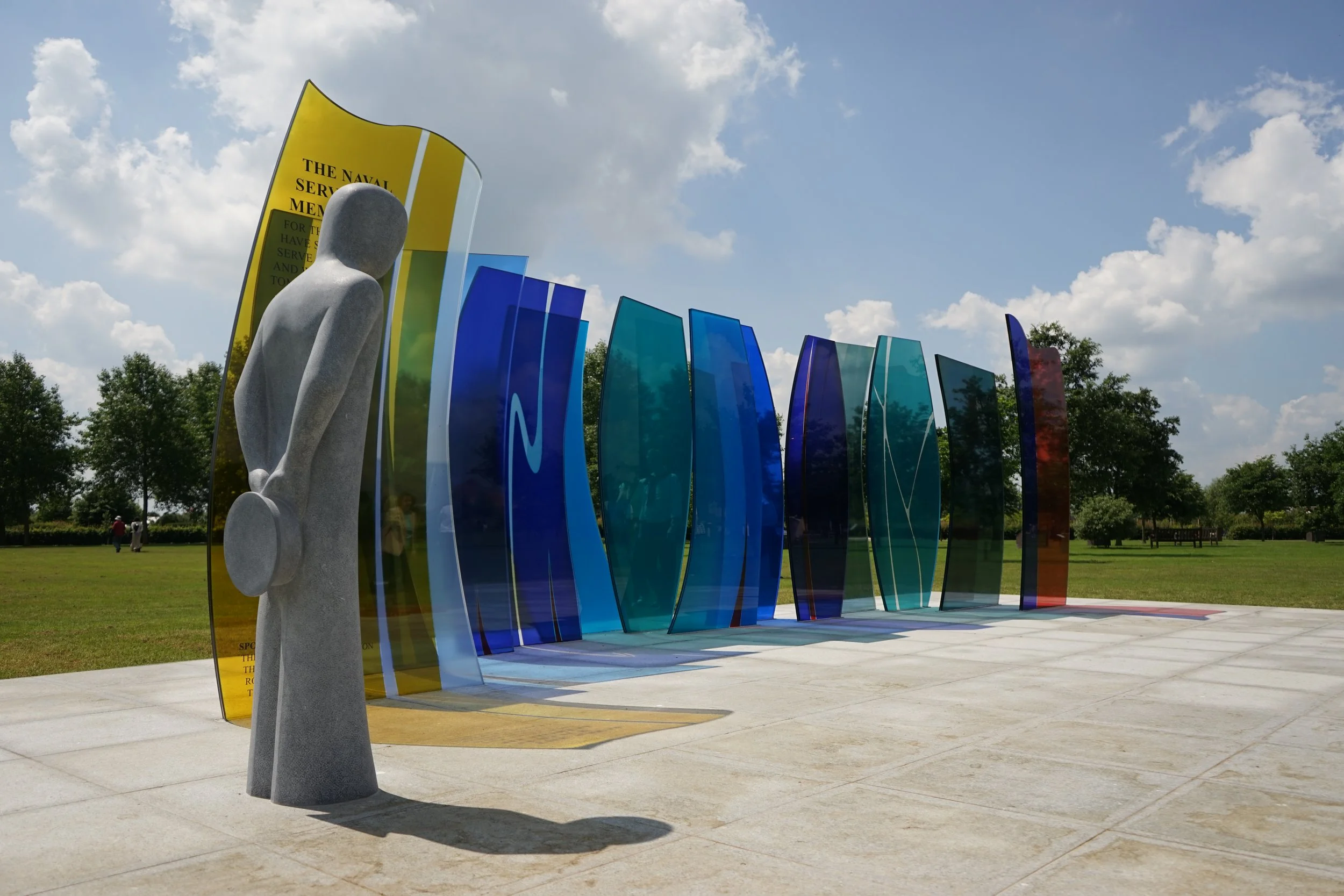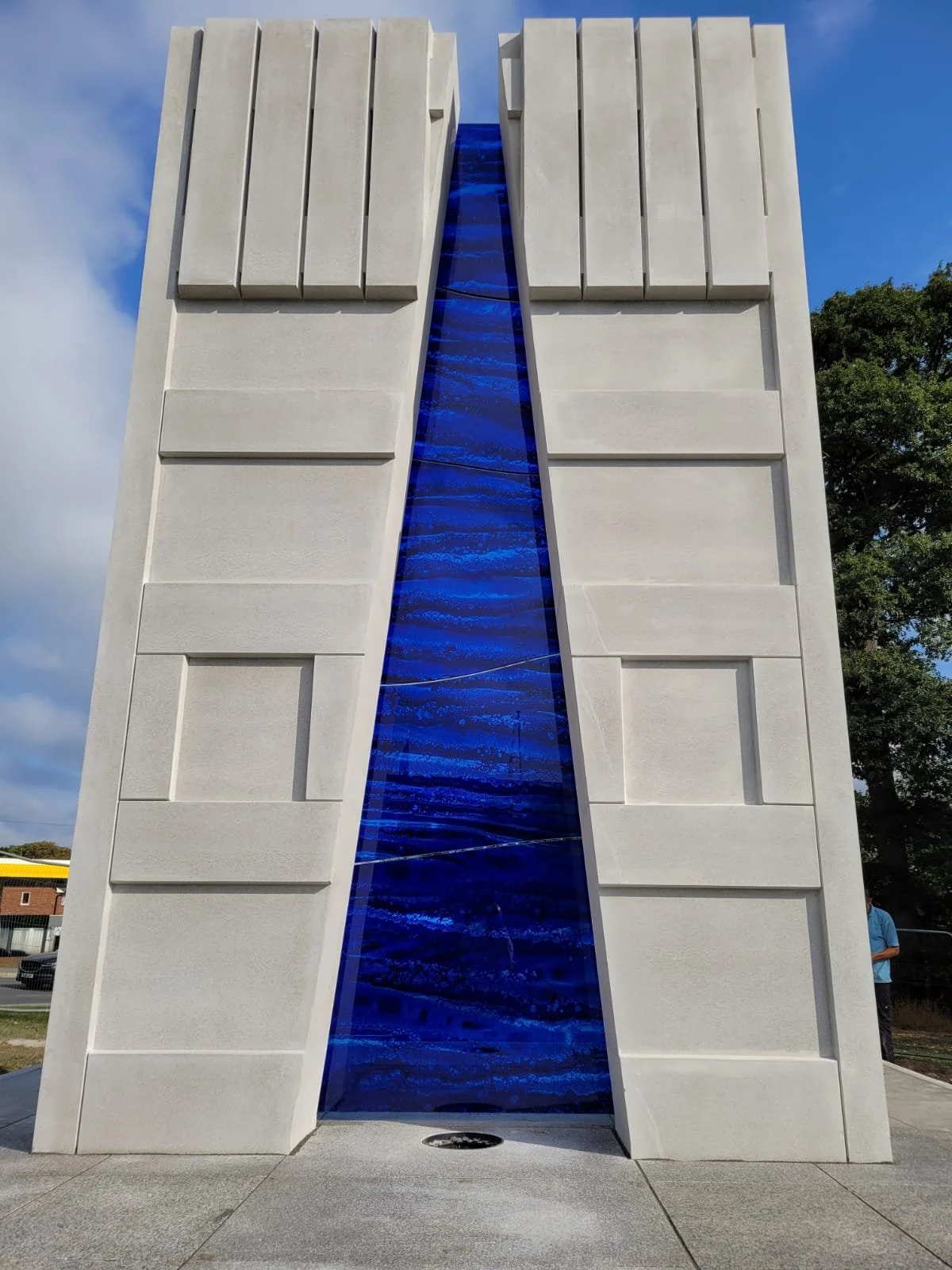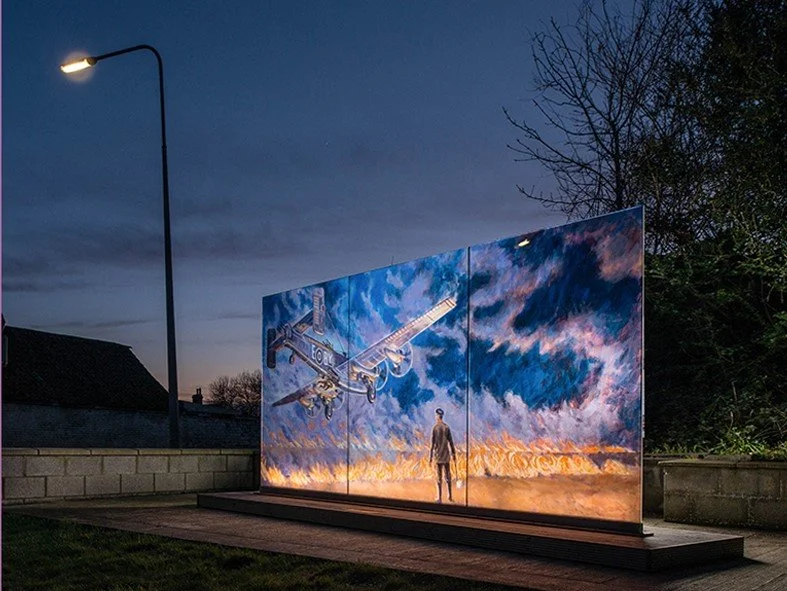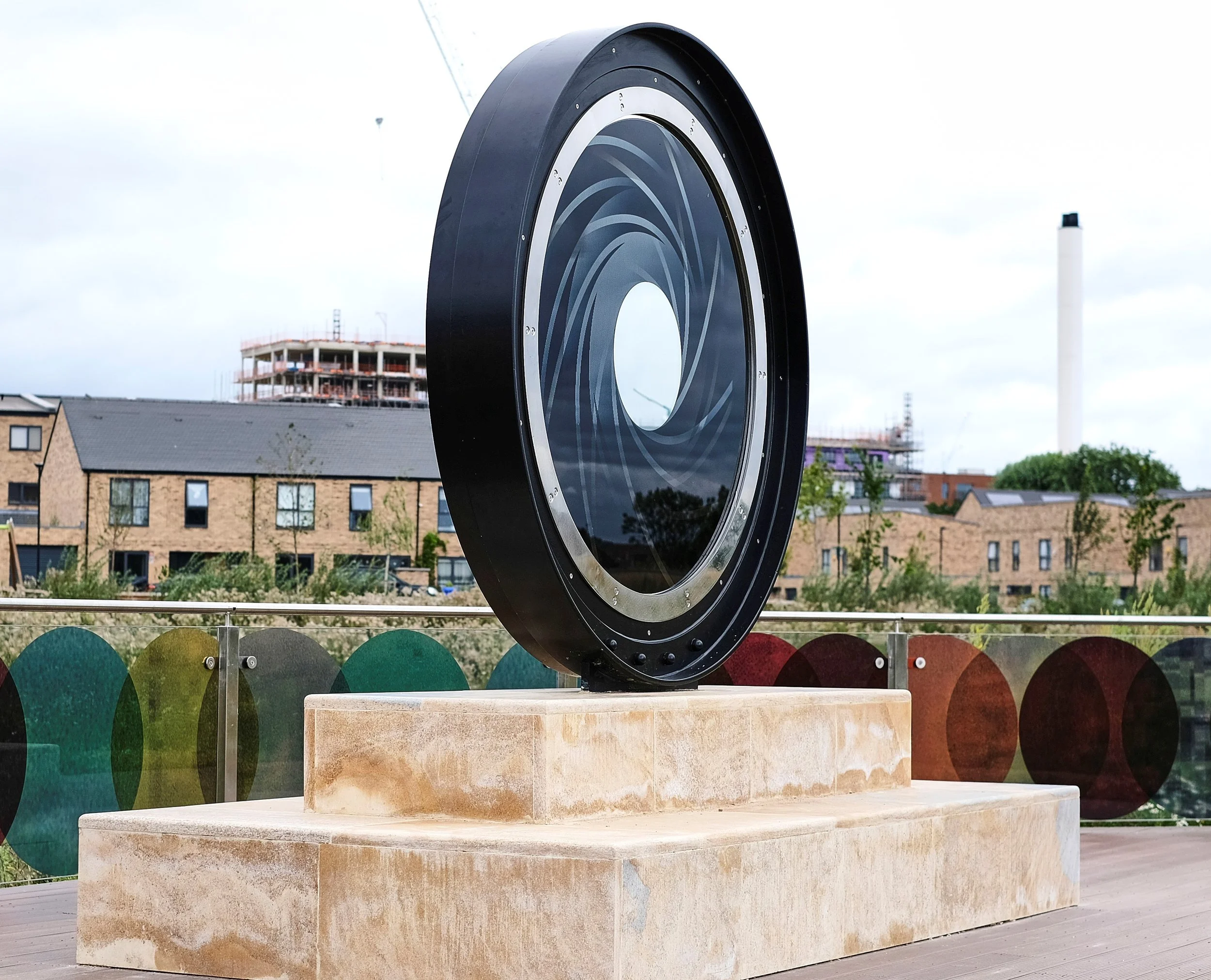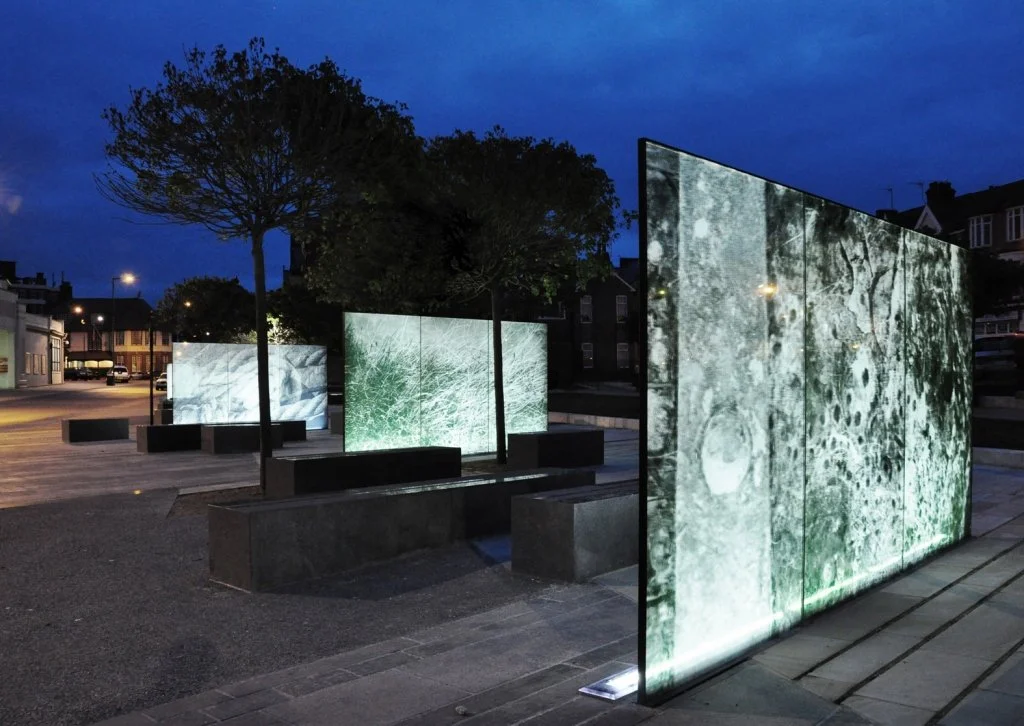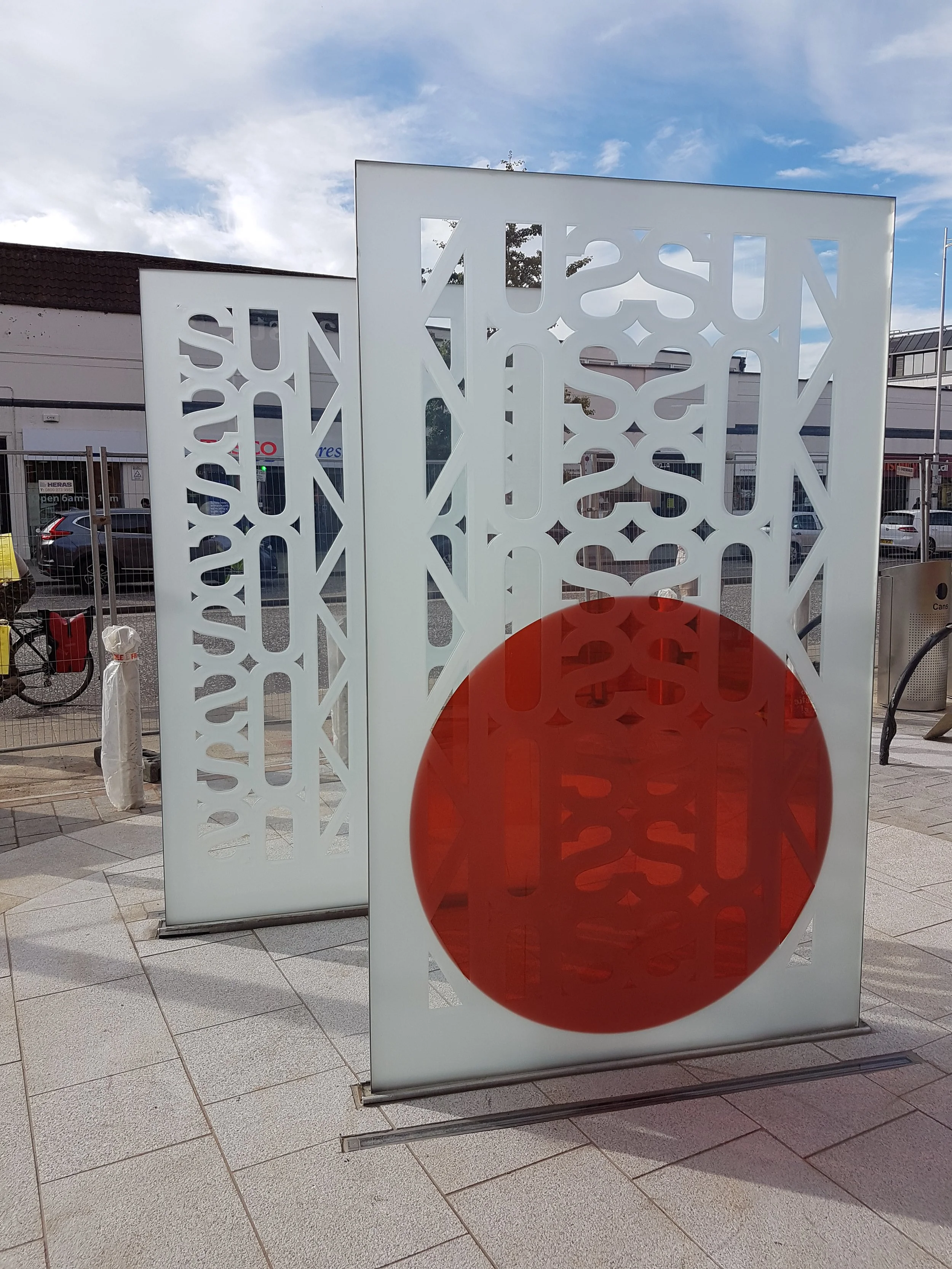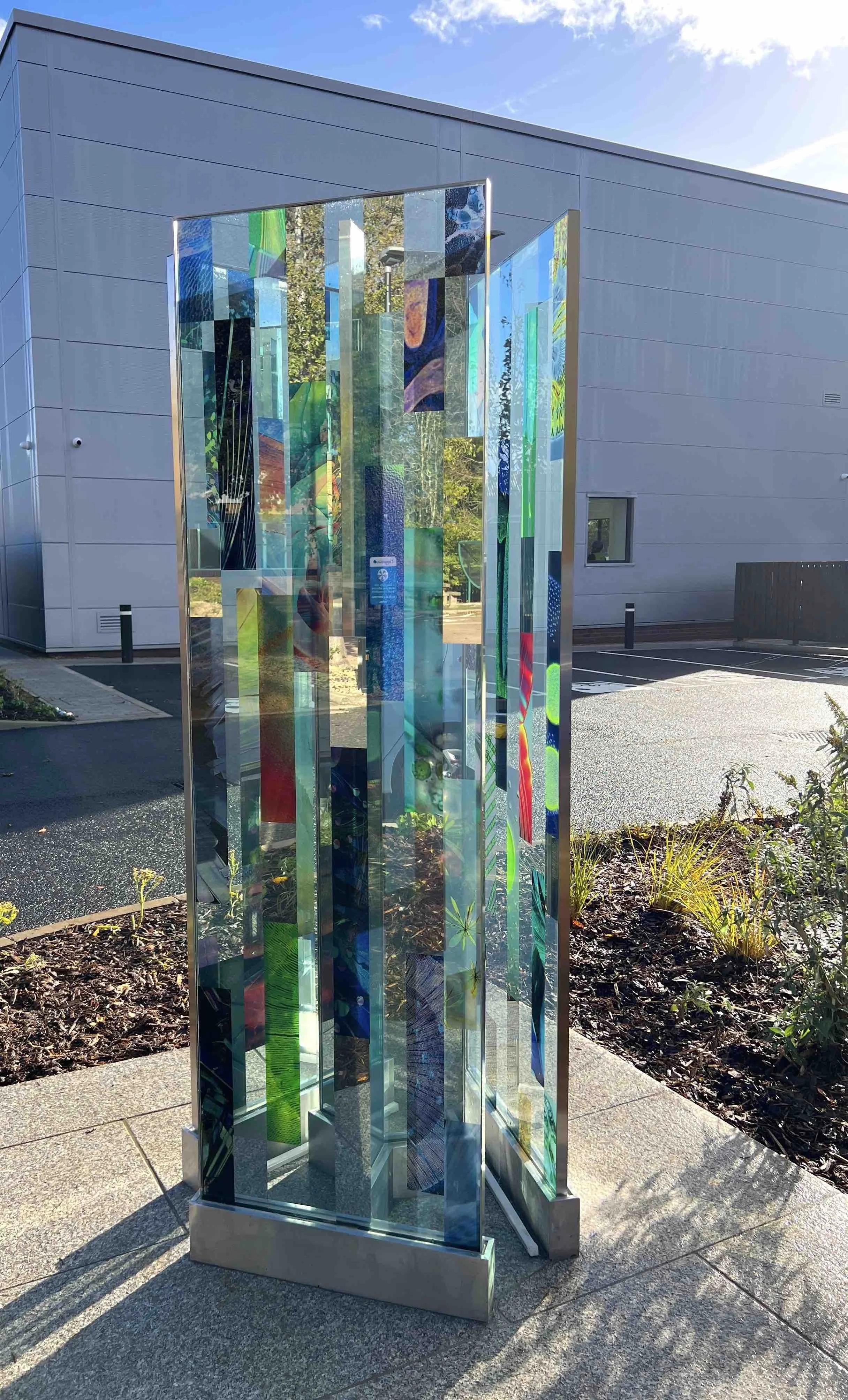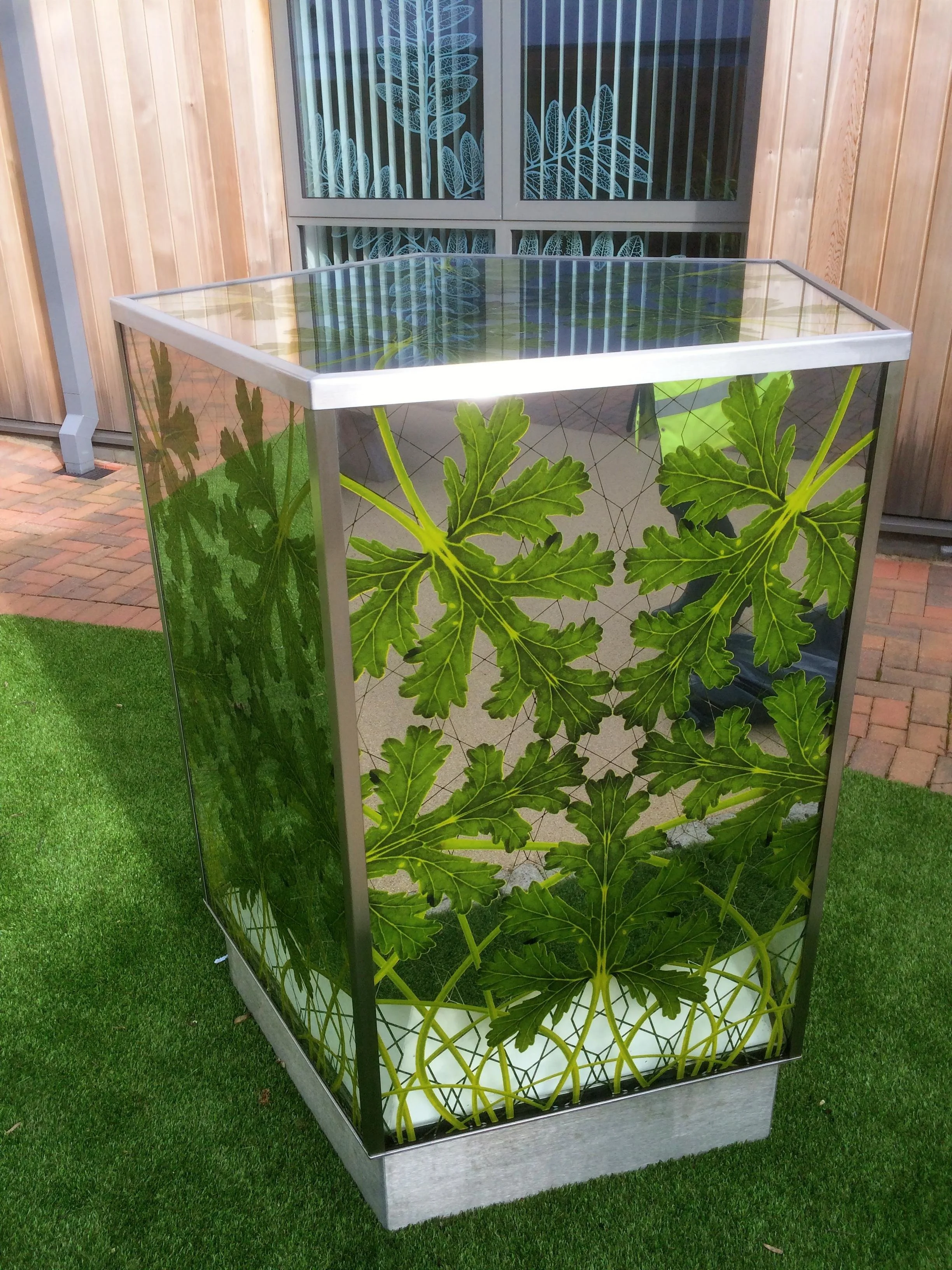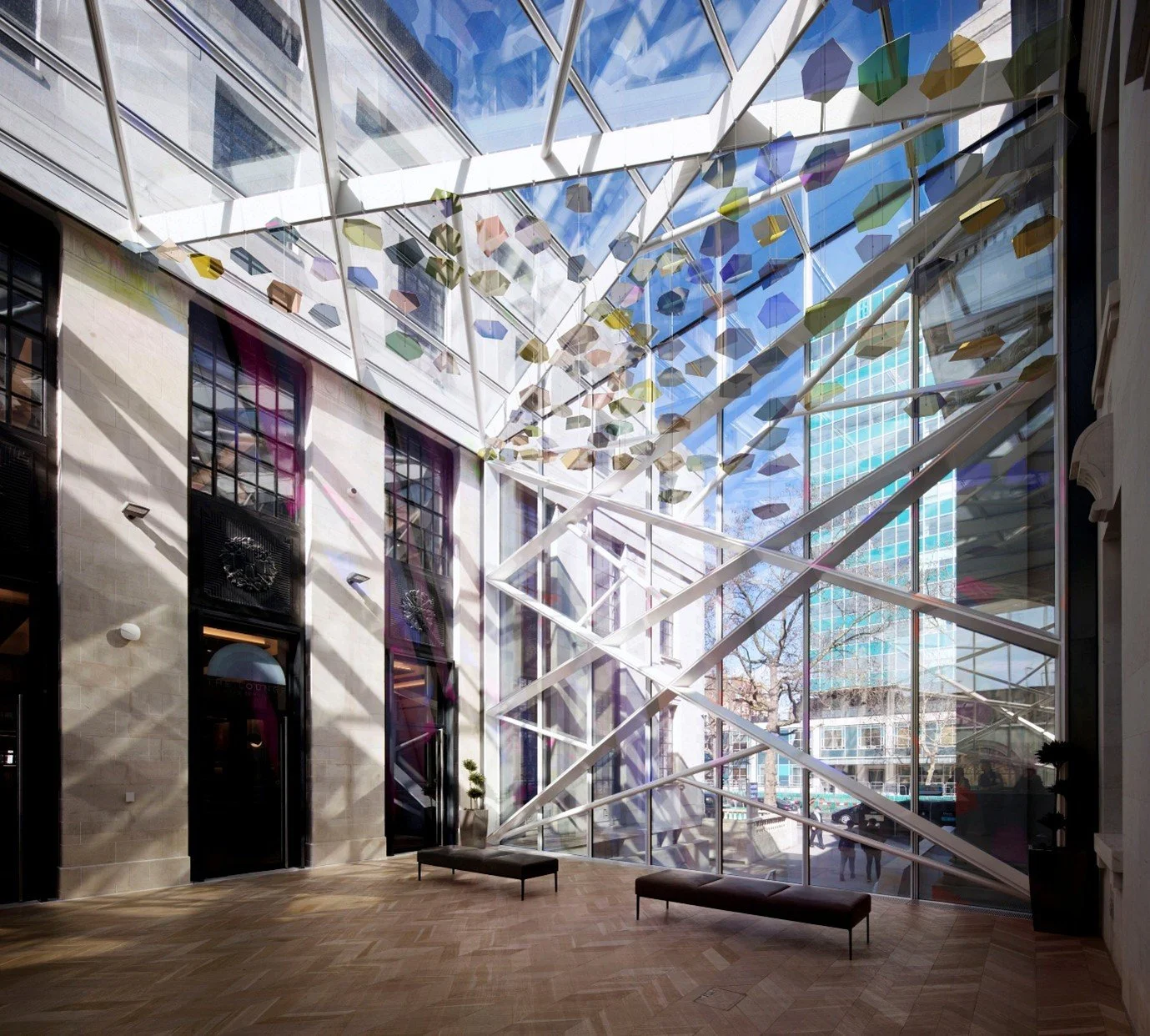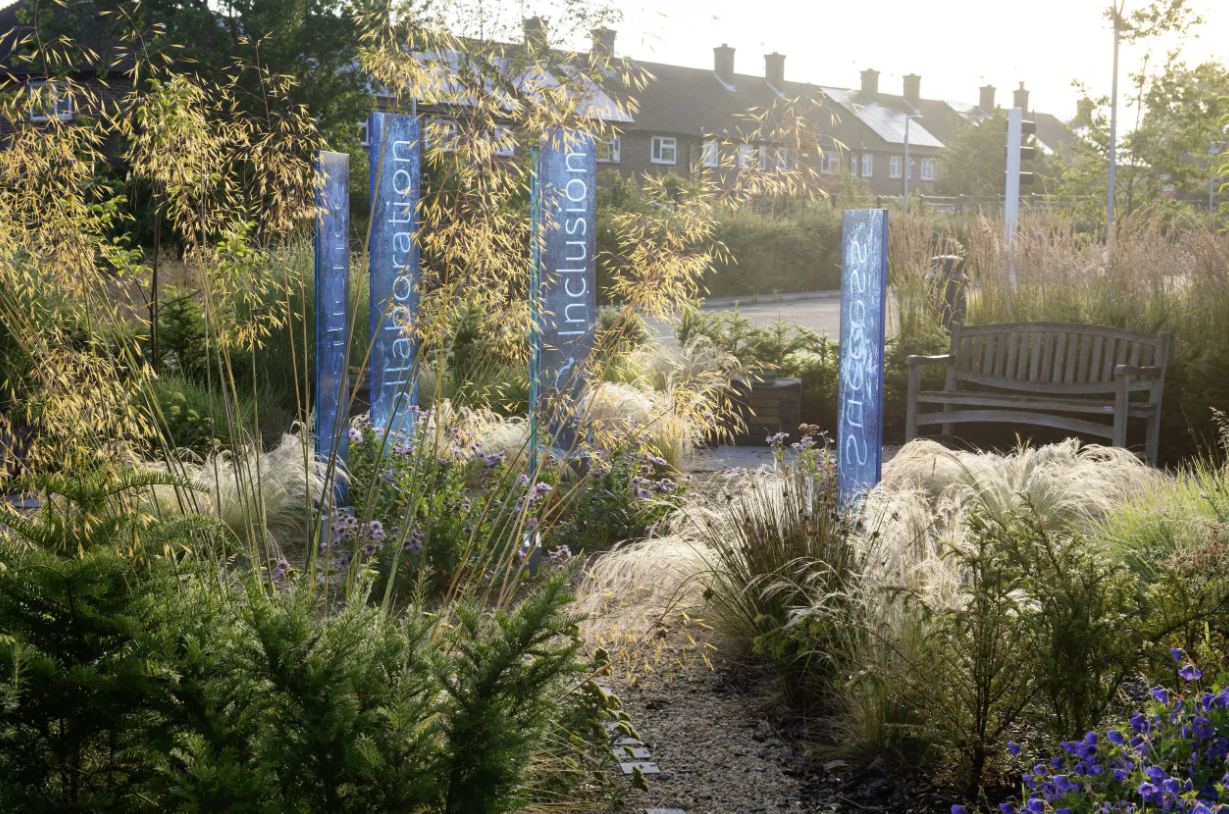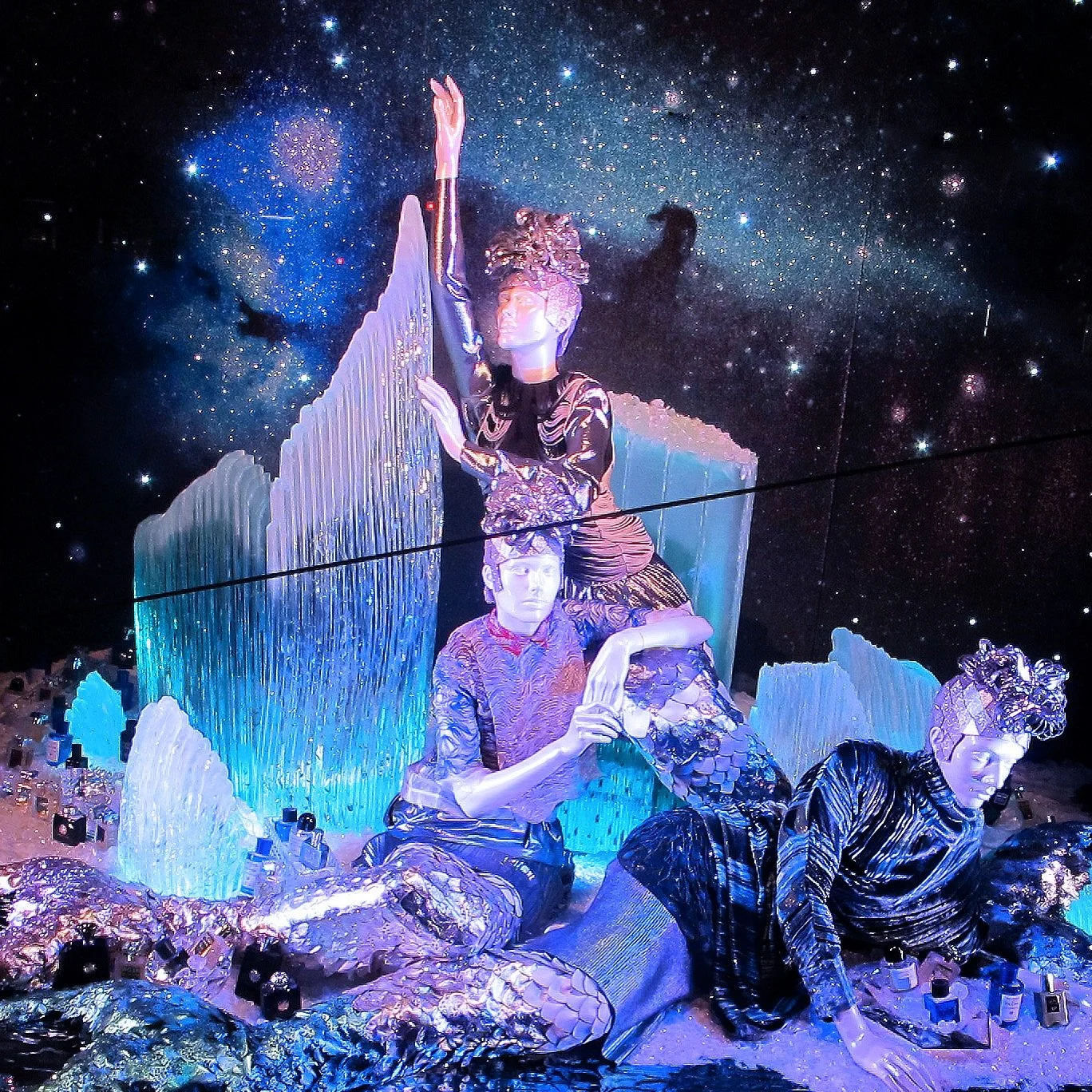Glass Sculpture
Above: National Memorial Arboretum, Staffordshire. Naval service memorial designed by Graeme Mitcheson
Over the years, we have worked on numerous glass sculptures, each sharing only one characteristic—they have all been entirely unique and bespoke.
Above: ‘Razor Shells’ Callaghan Square, Cardiff by collaborative artists Amber Hiscott and David Pearl
Displaying
Glass can be hung or displayed in various ways, with the most common method involving a customised channel set either above or below ground level. For flat panels, glass mirror clips are typically used.
When hardware is added to a metal sculpture, it can be polished to a high shine for a striking contrast, or powder-coated in a matching colour to blend seamlessly with the piece.
Customisation
The glass sculptures shown here have been crafted using a range of techniques, including screen printing, digital film, etching, slumping, and back-lighting.
Because these works are displayed in public spaces without barriers, all glass has been toughened and laminated to ensure it will not shatter if damaged.
Lighting
Natural light, LED spotlights, or backlighting can be used to accentuate the sculpture's form and reflections.
Below are some images showcasing a selection of glass sculptures we have manufactured:
A glass clock tower at Kirkstall Bridge Retail Park, Leeds, inspired by the area’s industrial heritage. The design draws from images of the local forge and textile mills, with a clock face that illuminates on the hour and gradually shifts in colour from cool to warm tones as the day unfolds by Kirsty Brooks.
‘Ever Glow’ by Graeme Mitcheson. Commissioned by Wakefield Council, Graeme created a contemporary sculpture at the gateway to City Fields, inspired by the area’s waterways, green spaces, and the historic lock gates of the nearby canal, reflecting both local heritage and the identity of this new community.
This public glass artwork at Carnaby Airfield, designed by sculptor and painter Stephen Carvill features a cantilevered panel. Enhanced with a ceramic coating on the reverse, it glows at night. The image commemorates the dramatic return of a bomber to a nearby airbase, where the entire crew was safely rescued.
In January 2021, Tom Waugh was commissioned through The Royal Society of Sculptors to create a sculpture for Persimmon Homes at Harrow View West, the former site of a Kodak factory. His design featured a 2.2-metre steel and glass interactive camera lens set on a stone plinth, with the glass displaying a barrier grid animation of an aperture opening and closing as viewers move around it.
At the National Memorial Arboretum in Staffordshire, The Salvation Army unveiled a toughened glass monument designed by Mel Gilman. Etched with two outstretched hands, it invites visitors of all ages to touch and engage with the tribute to those who served and sacrificed in times of conflict.
Kirsty Brooks’ project transformed a small triangular site by the seafront in Bridlington, Yorkshire into an outdoor venue for events and performances. Its glass panels, made from two laminated layers with images inside and out, create a dynamic visual effect—shifting between transparent and opaque, with one side reflective and the other matte. The installation has been warmly received by locals and visitors, especially for its striking illumination at night.
These 3 metre tall, free-standing glass sculptures, each 35mm thick, were designed for a garden in Quarry Bay, Hong Kong.
‘Between the Sun and the Moon’ by Elisa Artesero in Summertown, Oxford is inspired by the works of one of the city’s most famous former residents, J.R.R. Tolkien. The Sun Sculpture, active during the day, captures sunlight to create gently shifting patterns across the floor exhibiting deep sand-blasting to its outer face.
A public artwork designed by Jac Seifert for Barton House at Abingdon Science Park celebrates science and R&D. It features three glazed outer leaves with patterns from microscopic life, arranged like a DNA strand. A central tri-fold of mirrored leaves reflects these designs, as well as the sky and surrounding trees. The design includes screenprinted images and mirror.
Stirling Health and Care Village sculpture with green and black ceramic print with a printed mirror background. The pentagonal sculpture is made of 6 panels of toughened and laminated glass with gaps in the mirror print that enable coloured light to be projected out from the inside of the sculpture at night. Designed by Anna Heinrich and Leon Palmer.
We produced and installed the 100 geometric shards that made up Fenella Osborne’s stunning dichroic glass sculpture that graces the link bridge building of the Sammy Ofer Centre at the London Business School.With its dynamic play of light and colour, this piece captures movement, energy, and creativity—reflecting the spirit of innovation at LBS.
Created in memory of Martin Beard — a beloved community leader and head of Merstham Park School — this garden offers a quiet space for reflection and remembrance. Coloured etched glass reflects light within the landscape, displaying the values Martin inspired.
Bonded glass sculpture created for a Selfridge’s Christmas Window display. The glass layers were individually cut and bonded together to created the effect of shaped ice.
Coloured and cut glass designed to replicate the Soroptimist International “SI” logo by Graeme Mitcheson. The sculpture is located at the National Memorial Arboretum in Staffordshire.
A series of landscape screens at a regenerated retail park in Easterhouse, designed in collaboration with Macgregor Smith Landscape Architects by artist Kirsty Brooks. Inspired by the areas industrial past of weaving, dyeing, and flax growing, the designs draw on local plants and woodland for their colours and patterns. Playful bronze deer alongside the screen-printed glass panels enliven seating areas and encourage interaction.

